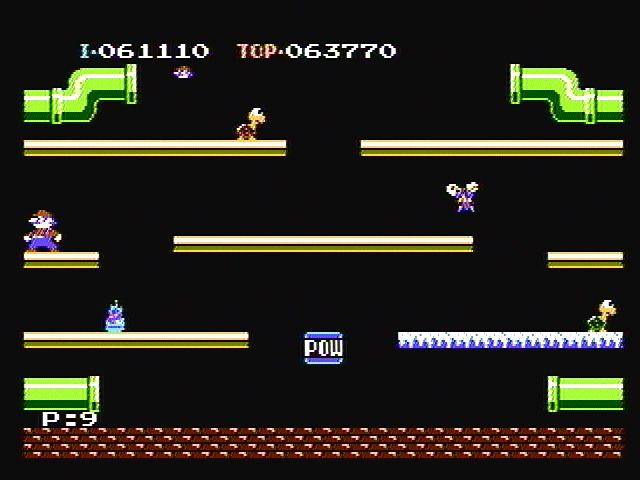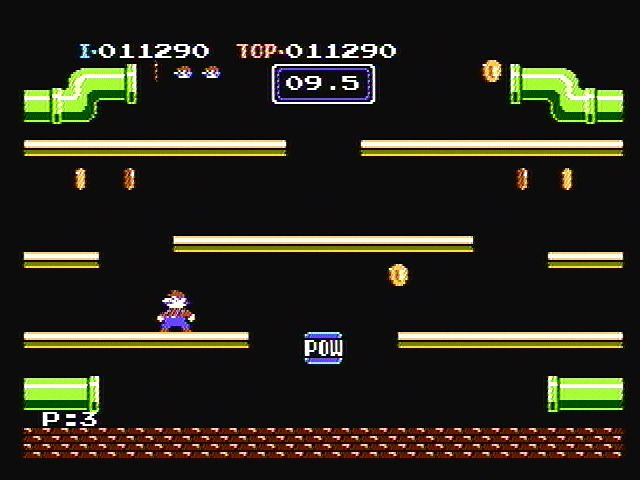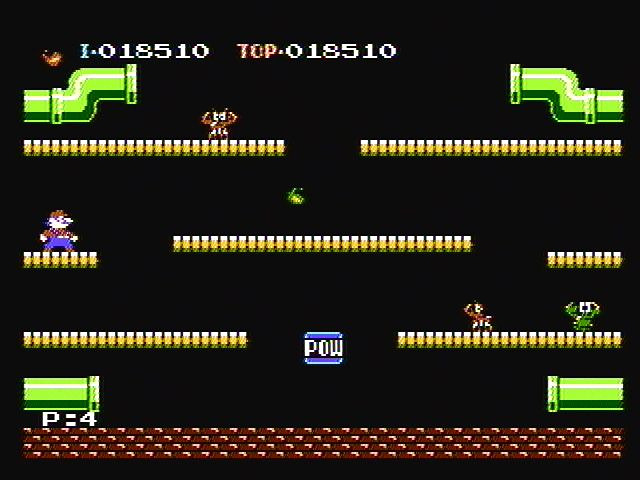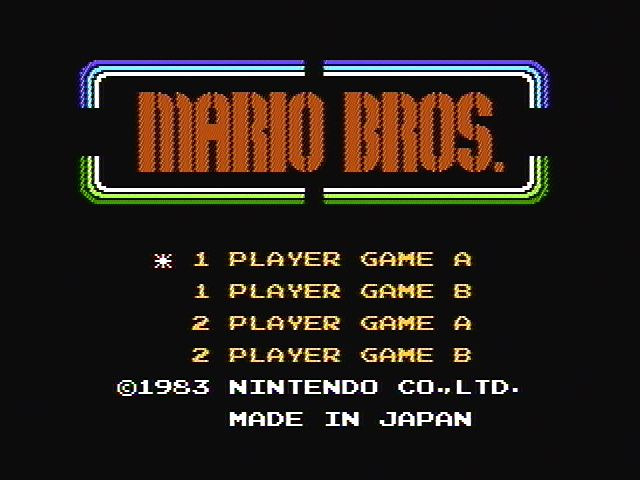
Mario Bros. (1986-)
Developer: Nintendo
Publisher: Nintendo
Genre: Platform
Mario Bros. for the NES was developed and published by Nintendo, with its NES release occurring in 1986 following the original 1983 arcade debut. The NES version adapted the classic arcade platforming gameplay for home consoles, allowing players to experience the fast-paced cooperative or single-player action on the home system. This adaptation introduced many players to Mario and Luigi as they transitioned from arcade stars to iconic home console characters, solidifying their place in video game history.
The game’s premise involves Mario and Luigi, two Italian-American plumbers, tasked with clearing the sewers of New York of various creatures that emerge from pipes. Inspired by earlier platformers and arcade action games, Mario Bros. focuses on quick reflexes, timing, and strategy rather than narrative depth. The setting is simple but effective, emphasizing enemy patterns and platform layouts to create increasingly difficult challenges as the player progresses. The NES version retained the arcade’s core design while making minor adjustments to suit the home console experience.
Gameplay centers on stomping enemies from below, flipping them over, and then kicking them off the platforms to earn points. Players must also avoid hazards and time their attacks carefully, as enemies increase in speed and difficulty with each level. The NES version supports both solo and two-player cooperative play, with players alternating turns or competing for high scores. The soundtrack consists of catchy, upbeat themes and sound effects that signal actions such as stomping enemies, collecting points, and completing levels, adding to the sense of pace and excitement throughout the game.
Mario Bros. serves as a prequel of sorts to the later Super Mario Bros. series, establishing the characters and basic mechanics that would be expanded in subsequent titles. The game led to numerous sequels and spin-offs, including Super Mario Bros. (1985) and Super Mario Bros. 2, which developed the franchise into a cultural phenomenon. Promotion for the NES version focused on its arcade legacy, cooperative gameplay, and the recognizable Mario characters. Reception was largely positive, with praise for its addictive gameplay, replay value, and multiplayer appeal, cementing Mario Bros. as a foundational title in Nintendo’s catalog and in the broader history of platform gaming.
Images from MobyGames
Buy Mario Bros.
Click one of the Ebay or Amazon buttons below to check the latest prices and purchase Mario Bros. for the Nintendo Entertainment System.

Related Searches
Mario Bros. NES Download
Mario Bros. is available to purchase and download from a range of vendors. Always shop around...
Mario Bros. NES Manual
Various repositories around the internet have scanned and archived a range of retro manuals. Search now to.....
Mario Bros. NES Rom
We don't host or link to rom sites for this game. However, there are many sites out there that may be...
Mario Bros. NES Walkthrough
Many sites - particularly YouTube - host a range of walkthrough videos to guide you in your quest to get...
Mario Bros. NES Cheats
There are various sites out there that can offer cheat codes for games. Search now to find all available...
Mario Bros. NES Controls
This information can often be obtained through the user manual. Alternatively there are many sites out there...
Mario Bros. NES Release Date
The initial release date for Mario Bros. is stated as June 1986. Other ports of the game may..
Mario Bros. NES Review
There are many sites out there that have collated and documented historic reviews of this game. Search now...
Mario Bros. Famicom
As a Nintendo Entertainment System release, this game was also likely also available on the Famicom. This....
Mario Bros. NES Speedrun
There is now a community of competitive speedrunners who will try and gain the fastest possible time on their....








